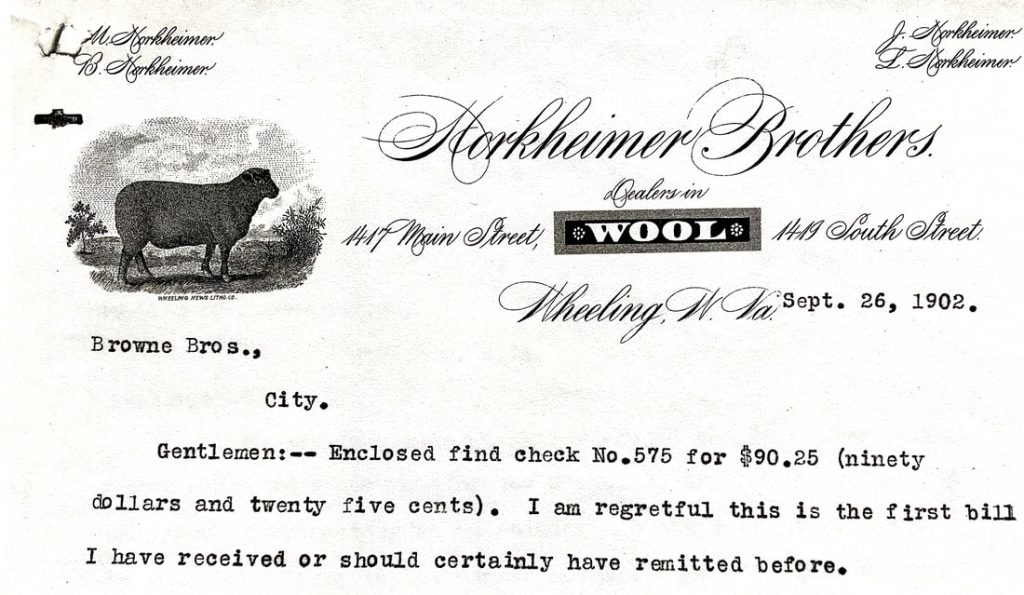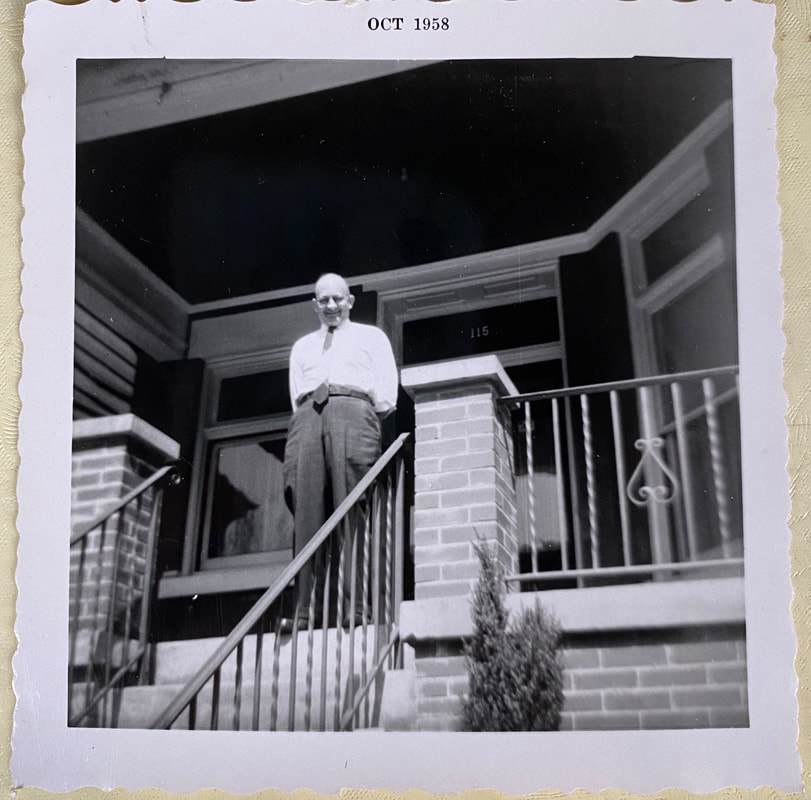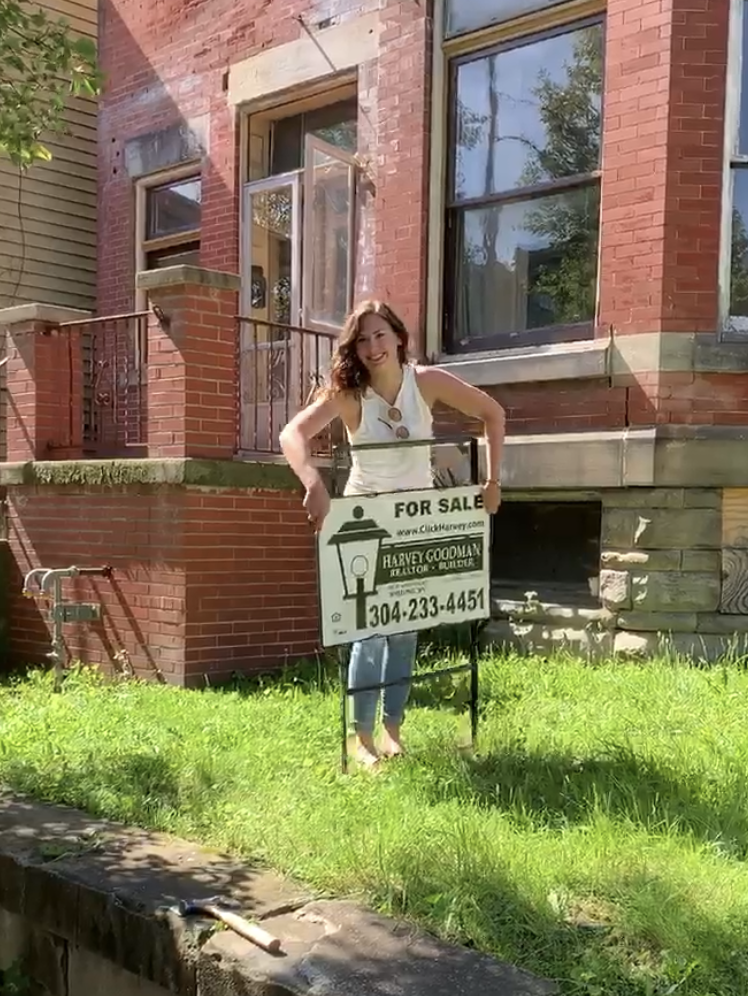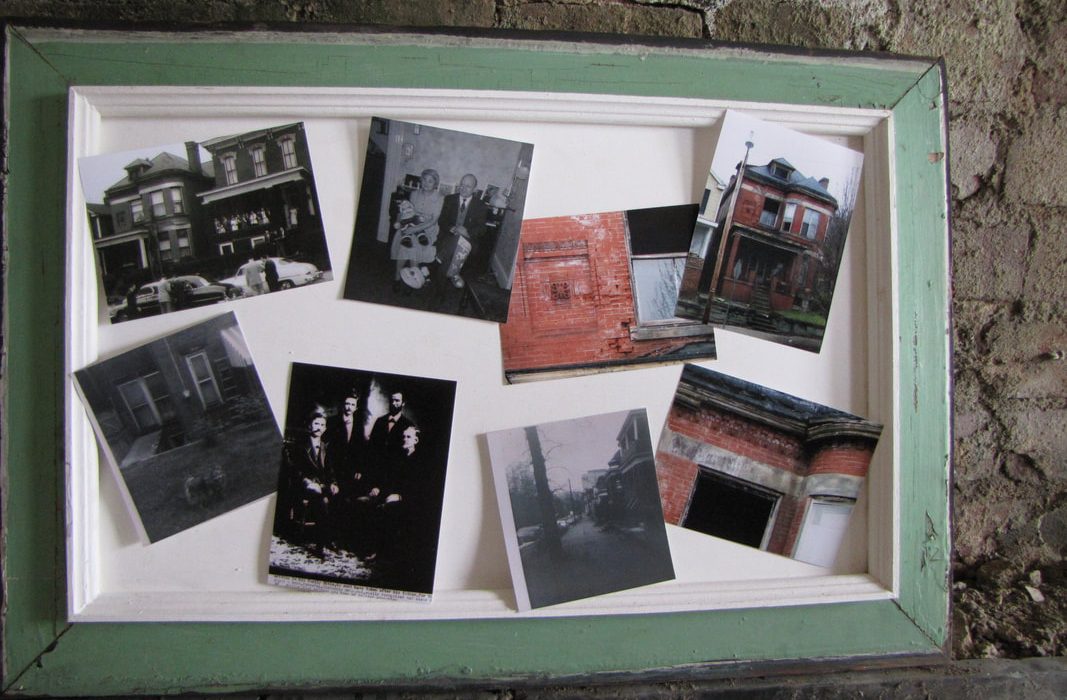The History of the House
One of my favorite things about living in an old house is knowing that I am just a piece of the history of that place. While I don’t live in the McLain house yet, I am constantly struck by the generations that came before me. With each room or space that I work on, I wonder how it was experienced in the 1890s, the 1950s, and beyond. This is not the first pandemic my house has witnessed. It has seen countless presidential elections, births, deaths, holidays, bad days and good days. It has also been home to many vibrant, interesting families.
Now being an architectural historian, you would think that I would pour over the historic documents and do extensive research about the history of the house. But alas, I am both lazy and busy, and lucky to have a local preservation organization, The Friends of Wheeling, that has done almost all of that work for me. The history that follows is a condensed version of a report compiled by the Friends’ president, Jeanne Finstein.
The McLains
The House was probably built for Thomas B. McLain around 1892. McLain (1842-1924) was born in Warren, Ohio and came to Wheeling with his parents, John G. and Eliza Ellen Baird McLain, when he was 2 years old. His father was a printer and publisher of the Wheeling Argus, one of the first newspapers in the city, from 1844 until his death in 1849. (Thomas would have been about 7 years old at the time of his father’s death.)
Thomas’s brother Robert began the family’s first drug store in 1856 in a building owned by Dr. Robert W. Hazlett at the corner of 38th and Jacob Streets in Ritchietown (South Wheeling). Thomas worked there as a clerk and errand boy. Around 1860 the McLain brothers established a penny post office in their store. This “proved to be quite remunerative to them and a great accommodation to the townspeople who took advantage of it. People who wanted their mail brought down from the city signed an order to the postmaster to have their mail put into the penny post box, and every morning it was carried down to the drug store, distributed into the proper boxes, and delivered when called for at a charge of a penny for each letter or paper. During this time, the younger brother [Thomas] boarded and lodged at the family residence on North Main Street, between 8th and 9th Streets, and walked to and from the little drug store stopping on the way at the post office for the penny post mail.”
Thomas and his three brothers, Henry B., Robert B., and John G. McLain later opened the McLain Brothers Drug Store in Washington Hall, at the northeast corner of Market and 12th Streets. It was described as one of the most up to date in the city. When Washington Hall was torn down, the McLain Drug Store moved across the street.
By 1890, the three older McLain brothers had retired from the drug business, and in 1893 Thomas, under his physician’s advice, disposed of the drug business. That was around the same time that the house at 115 14th Street was built. Then Thomas and his son James formed the McLain Dental and Surgical Supply Company, located on the 2nd floor of the “McLain block,” corner of Market and 12th Streets. The company kept a “large and varied stock” of artificial teeth and instruments used in dentistry; surgical instruments; and sick room and hospital supplies such as hot water bottles, ice bags, air pillows, bed pans, syringes, sterilizers, and food warmers. “They also made a specialty of renting rolling chairs, invalid beds, air mattresses, chair commodes, and surgical operating tables. A specialty of the firm was truss fitting…They also supplied appliances for deformities of the body, artificial eyes, limbs, arms, and hands…along with instruments to aid the hearing, such as mohair conversation tubes, London hearing horns, hard rubber audiphones fans, black metal ear trumpets, and invisible ear drums.” Every time I take down a wall or pull up a floorboard, I expect to see a glass eye staring back at me. So far, no eyeballs have been discovered.
Thomas McLain lived at 115 14th Street for about ten years. By 1903-4, Wheeling City Directories show his residence as Echo Point. He later lived at 80 North Front Street (1905-6), then 303 South Penn Street beginning around 1907, followed by 416 Richland Avenue (Warwood) beginning around 1919. When he died in 1924 at age 81, his residence was listed as 127 Edgwood Street. His obituary called him “one of the city’s pioneer businessmen and most highly respected citizens.” He was survived by his wife and three children – Mrs. J. Ralph Boyd, Mrs. D.A. Burt, and James L. McLain. He was buried in Greenwood Cemetery.
The Horkheimers
Bernard Horkheimer and his wife Estella are listed at 115 14th Street in the 1903-4 City Directory. Horkheimer (c. 1853-1906) was a German immigrant who was in the wool-buying and grocery business with his own brothers and the Baer brothers. The Horkheimer family was very prominent in the Wheeling Jewish community at the time, and two of his nieces (daughters of Morris Horkheimer) married local rabbis who went on to some renown in their later lives. Bernard’s death certificate states that he was “accidentally killed by being crushed between [railroad] cars. He is buried in the Jewish section of Mt. Wood Cemetery. Horkheimer’s widow remained in the house until around 1910.
I have a particular affinity for the Horkheimers for some reason. Estella is one of my favorite names from my favorite classic, Great Expectations, and I get the sense that some of the early design decisions in the house were actually from this time period, not its original construction. I haven’t experienced anything paranormal in the house yet, but I do occasionally ask Estella what she thinks of my choices.

Later Owners
After the Horkheimers, the next resident was Frank C. Swift, whose occupation was shown as broker and then as traveling salesman in the 1917 and 1920 City Directories. I think Frank C Swift is the best name for a travelling salesman possibly ever, and for that reason I am also fond of him. Swift was followed by Rev. Pliny Brokan Ferris and his wife Alice. Ferris was the pastor of 2nd Presbyterian Church. Deed records indicate that church trustees owned the property during this period. When the Second Presbyterian church was demolished in the 2010s, windows from the building were salvaged by the Wilsons and installed in the dining room.
Subsequent residents/owners included veterinarian Leon Reefer (and his wife Josephine), who apparently used the house as both an office and residence from around 1928 until his death from pulmonary tuberculosis on January 1, 1935. Daniel H. and Edna Manners were the next residents (1936-1946). Manners worked as office manager for Hygrade Food Products and later as a purchasing agent for the John Wenzel Company, meat packing.
The Antonuccis
The Antonucci family then lived at this address and 115 ½ (or 115a and 115b) from 1946 until the late 1980s. The split address came from the rooms rented on the second and third floors. Owners Carl and Mary did not have children, and converted the first floor to their living quarters, and rented space upstairs. Carl Antonucci was a millworker at Wheeling Steel. Mary was a talented cook and baker, and worked at a local bakery. They both walked to work, and never owned a car. East Wheeling during this period was heavily populated with Italian immigrants, and the family of Mary Antonucci occupied 113 (next to the McLain House) and 126 ½, just up the street. Mary and Carl were well known throughout the neighborhood for their gardens and Sunday dinners.

The Vacant Years
From the 1980s on, the McLain house appears to have been vacant. The inheritor of the Antonucci’s is not well known, and never lived in the house. Neighbors remember a few owners who never occupied to house, and then a long stretch of vacancy. While much of the historic fabric of the house remains, it was during this time that the stained glass transom windows on the front of the house were removed.
The Wilsons
Brian and Stephanie Wilson owned the McLain house from 2013 until I purchased it from them in May 2020. The Wilsons saved the McLain house from demolition, and began the restoration process with extensive structural repairs to the basement, updating systems, and acquiring the lot next door. Both trained at the Belmont Restoration Program, the Wilsons are true preservationists that brought the house back from the brink. They also saved the tiny house from demolition, relocated it to the back yard, and incorporated several pieces of local salvage into the design. I am so grateful for the time and effort they spent on the house, and consider them both friends.
And then there was Me
The first time I saw the McLain house was Labor Day weekend, 2019. My friend Stephanie was visiting from Virginia, and I was taking her on a walking tour of the architecture of Wheeling, because I am an insufferable host that relentlessly imposes my interests on anyone around me. I had never really noticed this house before, so we stopped in front and I said how much I liked it, and I wonder who owns it. My now neighbor Donna overheard me, and immediately filled me in on the situation. Brian and Stephanie and I had many mutual friends, so a facebook message later we set up a viewing.
I walked through the house for the first time over Thanksgiving, again over Christmas, and then began a long process of due diligence and financing. Throw in a pandemic to slow things down a bit, it was a long process. I closed on May 28th 2020, and started work in the next month.
The longer I own the house, the more people and memories surface. It’s been wonderful to hear the recollections of neighbors and descendants, and I only hope this fountain of knowledge continues.







I have so enjoyed this tribute to the many cherished lives and caretakers of your home.
Nice write up. Great work too. You are truly dedicated. And you look so happy!
Wonderful story and history about the house. I was picturing all those people in those days and how they must have lived. Good luck with the project and wishing you all the best for preserving such a gem